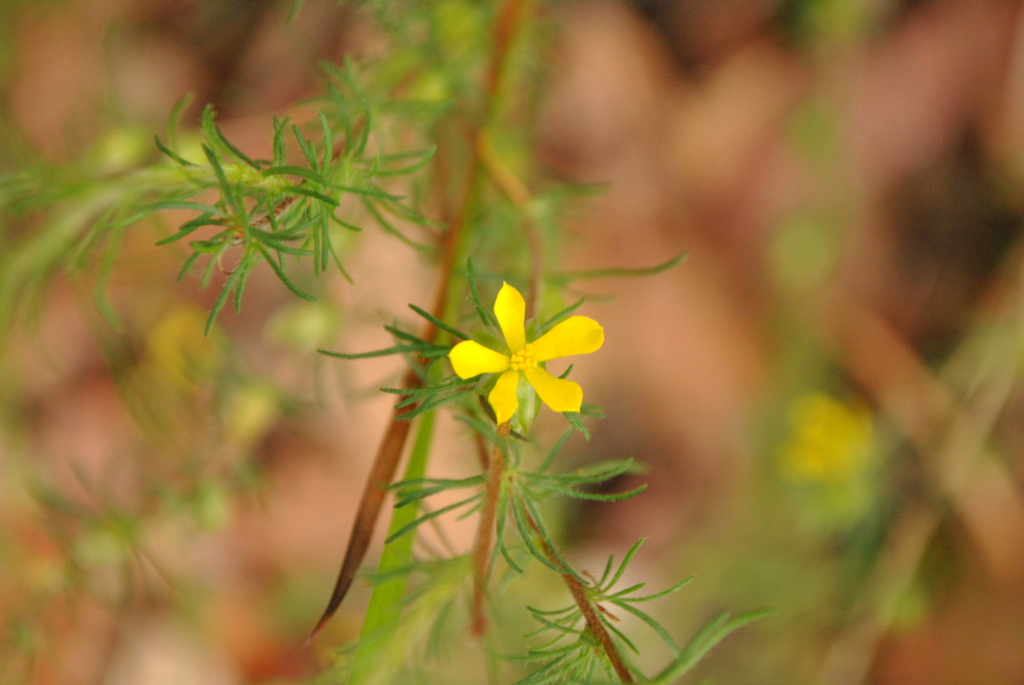Hibbertia fasciculata var. prostrata
(Hook.) Hook.f.Erect to spreading shrubs with usually glabrous branches to 0.5 m long, lateral branches usually fascicled. Vestiture of forward-directed straight or crisped simple hairs. Leaves linear, 3–21.4 mm long, 0.3–0.7 mm wide, glabrous, puberulous or rarely tomentose; apex obtuse, erect to somewhat incurved; margins often incurved; lower surface usually strongly convex with central vein not showing. Flowers sessile, terminal, mainly on short shoots, with 2 triangular bracts 1.2–2.6 mm long; sepals 3.2–6.5 mm long, unequal, glabrous or rarely puberulous towards the apex; petals obovate, 3.4–12.6 mm long, bright yellow; stamens in groups around the ovary; filaments free; anthers 1–1.4 mm long; carpels 3, glabrous. Flowers Sep.–Dec.
LoM, Wim, GleP, VVP, GipP, OtP, WaP, Gold, CVU, GGr, DunT, EGL, EGU, WPro, HSF, OtR, Strz. Also Tas. A common species of sandy soils in heathland, heathy woodland and mallee communities.
The anthers are longer, flowers larger and habit more robust than in the type variety, Hibbertia fasciculata var. fasciculata, which is restricted to New South Wales. Despite the varietal epithet ('prostrata'), the plant is rarely, if ever, truly prostrate in Victoria.
Toelken, H.R. (1996). Dilleniaceae. In: Walsh, N.G.; Entwisle, T.J., Flora of Victoria Vol. 3, Dicotyledons Winteraceae to Myrtaceae, pp. 300–313. Inkata Press, Melbourne.
 Spinning
Spinning